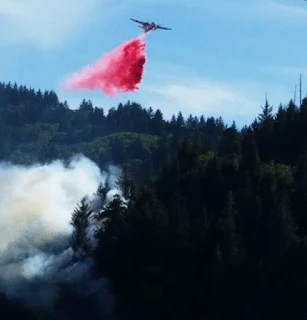“If I were asked to name the most important date in the history and prehistory of the human race,” wrote author Arthur Koestler in the 1978 prologue to his final book,
Janus: A Summing Up, “I would answer without hesitation, 6 August 1945.”
Before then, each person lived with the prospect of individual death, he explained. But “since the day when the first atomic bomb outshone the sun over Hiroshima, mankind as a whole has had to live with the prospect of its extinction as a species.”
Seventy years later, the danger of instant eradication in a global nuclear war seems past, and we are becoming more conscious of ecological threats to long-term human survival. But the nuclear threat is not over, nor is it confined to the possibility of isolated terrorist attacks. The threat of human extinction that begins with a nuclear exchange may still exist.
 |
| Hiroshima |
While most attention has focused on the possibility of Iran developing a nuclear weapon in the near future,
some 15,700 nuclear bombs are in the hands of 9 other countries right now, including some 5,000 weapons in active deployment.
All 9 countries with nuclear bombs are either expanding their arsenals, building new delivery systems or modernizing old weapons and systems.
Though the U.S. and Russia have reduced the number of weapons from Cold War levels, together they maintain about 1800 missiles carrying thermonuclear bombs on hair-trigger alert, ready to fire within minutes and therefore most susceptible to momentary miscalculation and accident.
 |
| Nagasaki |
Those of us who lived through the Cold War could read and see films about how powerful each one of these bombs can be: vaporizing every living thing for miles, igniting firestorms and spreading radiation for hundreds of miles or more, killing and maiming for years, with documented cases of genetic deformities in the next generation.
These terminal dangers were embedded in popular culture for decades. But as memories of Hiroshima and the Cold War recede, so apparently does awareness of the nature and danger of nuclear weapons.
The US has ten times the number of nuclear weapons that US citizens believe there are, according to
polls. A survey of members of Congress revealed that almost none of them knew how many nuclear weapons are in the US arsenal. But the US is not the exception--several studies
show that knowledge about nuclear weapons today is low.
 |
| Hiroshima |
In popular culture today, nuclear war has been reduced to the bright explosions and apocalyptic fantasies of video games, including the latest
version of Fallout Shelter. “Simulate a beautiful nuclear war right in your browser,” says the
headline of a recent Popular Mechanics post.
More worrisome are movies and TV dramas that treat nuclear bombs like conventional explosions, only a bit bigger and more colorful. For example, in the 2014 Hollywood
remake of
Godzilla, a nuclear bomb many times more powerful than the Hiroshima device was detonated on the water apparently within view of the San Francisco shoreline without damage to the city or its people. Not even a wave.
This is an irony worthy of Doctor Strangelove, since the original Japanese Godzilla movie was a response to the radiation dangers of hydrogen bomb tests in 1954, directed by a man who had seen Hiroshima shortly after its atomic destruction.
To misconstrue the true nature and difference of nuclear weapons could lead to horrific mistakes. The Physicians for Social Responsibility calculated that a relatively small nuclear “bunker buster” attack on Iran would result in 3 million deaths within 48 hours, and expose some 35 million to radiation. Radioactive fallout would reach into Pakistan, India and Afghanistan. Radiation killed almost twice as many people in Hiroshima over the following five years than died on August 6, 1945.
 |
| Nagasaki |
But even without radiation as a factor,
research conducted a few years ago found that a limited nuclear exchange between India and Pakistan (for instance) could lead to global famine within a few years, due to ozone layer damage caused by massive urban firestorms. If that study is correct, it’s another reason that a larger nuclear exchange between the U.S. and Russia could still lead to human extinction.
In particular, the danger of instant nuclear annihilation remains because of those missiles on hair-trigger alert, especially with tension between the U.S. and Russia over Ukraine and other matters, and
both sides
talking about nuclear options.
George W. Bush and Barack Obama are among the many leaders who have
advocated an end to hair-trigger status. President Obama has the authority to take at least the 450 land-based ICBMs off hair-trigger. If Russian President Putin is serious about recent conciliatory statements, he could match that action. The 70th anniversary of the Hiroshima bomb would be a powerful moment to do so.
Also of interest: The Washington Post has an article about the effects of a Hiroshima-sized atomic bomb on American cities, including links to Internet sites that provide impact maps for other cities. Also several other of my essays on the subject, including on the 60th and 65th anniversaries of the atomic bombing of Hiroshima.
Also: This NY Times story on how a new generation is being enlisted in remembering the oral history of Hiroshima from the last survivors.

























